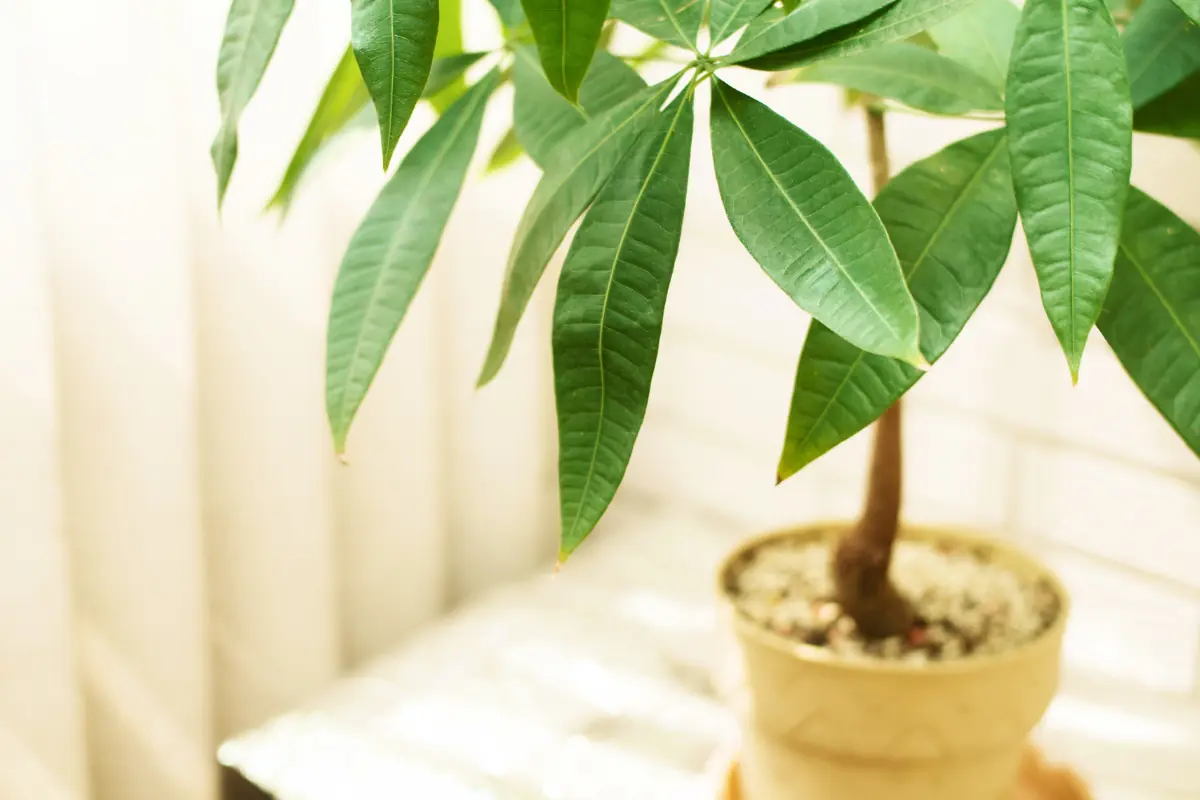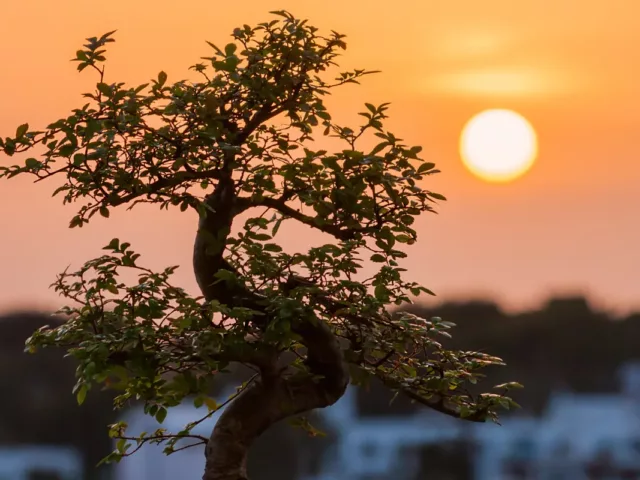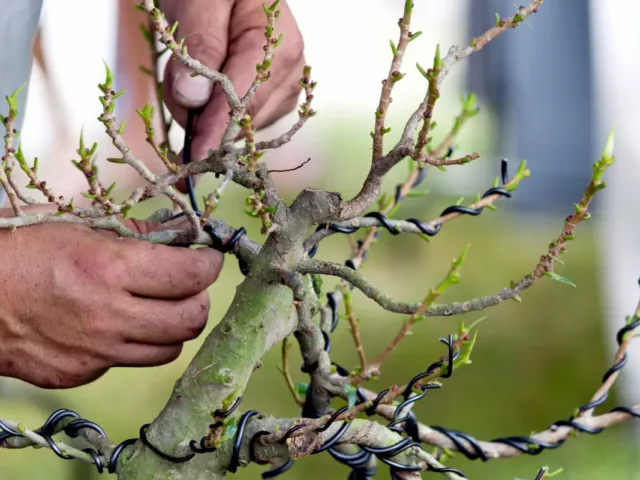As an indoor houseplant, Money trees have a separate fanbase. Many believe that this plant is a symbol of prosperity and brings good luck to those who own it. But there is a lot of confusion surrounding whether or not is money tree a bonsai?
The money tree or Pachira Aquatica is not a type of bonsai tree. But it is undoubtedly a popular choice for the art of Bonsai. With its braided trunk, it is a suitable candidate to grow as a bonsai tree. With proper pruning and maintenance, it can make a lovely and decorative indoor bonsai.
As an indoor plant, a money tree can beautify your house, improve the indoor air quality and even bring some money luck.
If you are curious to find out if you can use it to grow a bonsai tree, I will discuss it in detail in the rest of the article.
I will also share the specific guidelines you can follow to grow your money tree bonsai with ease.

A Brief Introduction to a Money Tree
The money tree or Pachira Aquatica is popularly sought-after as an indoor plant. The tree adapts to growing indoors extremely well because of some specific characteristics.
If you don’t know much about a money tree, you may have wondered what type of tree is a money tree.
Also known as Saba nut or Guiana chestnut, a money tree is a tropical wetland tree and a member of the Malvaceae family. It is native to Central and South America and grows mostly near wetlands and swamps.
The money tree loves wet and moist soil and does extremely well under indirect light. Such characteristics of the plant make it ideal to grow indoors.
Nowadays, you can find Pachira Aquatica almost all over the world and it is most popularly found as a bonsai tree. The central trunk of the tree may have three, five, or even seven stems.
Often, the trunks are seen to be in a braid. Many believe this unique braid can lock in good fortune. The top of the tree has a 5-lobed leaf arrangement and is also considered to bring luck.
The followers of Feng Shui believe that a properly placed money tree may bring prosperity, good luck to the place. It also creates positive energy or chi.
Such beliefs make the tree a fashionable choice as gifts for weddings, birthdays, and housewarmings.
Can You Grow a Bonsai From a Money Tree?
Pachira Aquatica is frequently sold commercially as a bonsai tree or a houseplant under the name of a money tree or a money plant. The tree also has many other common names such as Guiana chestnut, Malabar chestnut, water chestnut. With proper maintenance and enough effort, you can grow a beautiful bonsai tree using this plant.
Contrary to popular belief, bonsai is the name of an art form and not the name of a specific type of tree.
You can use any tree to grow it into a bonsai and this rule applies the same to a money tree. You can grow a unique and lovely-looking bonsai from a money tree.
But as opposed to growing it as a houseplant, growing a bonsai from a money tree may not be quite easy.
A money tree has unique growth characteristics where the real branches and fine ramifications may not develop properly on smaller plants.
The tree will also have large compound leaves that come on long stems. So needless to say, making a classic bonsai from money may prove to be quite difficult.
But with proper maintenance and much effort, it makes a beautiful decorative bonsai for your home.
Guidelines On Growing A Bonsai Money Tree
When small, you can train a money tree using the art of bonsai. A bonsai money tree makes a unique and aesthetic addition to your household.
However, a Bonsai Money tree is essentially five trees braided into one. So to most people, such a bonsai tree can seem quite arduous to take care of.
But the truth is, you just need some proper guidelines on how you can take care of your bonsai money tree.
I have provided some specific guidelines on how you can take care of your bonsai money tree properly:

Location
When you are growing the tree indoors, you can choose a very bright location. It should be ideal to place the tree beside a window that faces south.
Keep in mind that a money tree will need high humidity. So it’s best to put the plant in wet gravel on a tray. Mist the foliage frequently so it won’t dry out.
During summer, it is best to place the money tree outside where it is sunny. Placing it in the garden or on the balcony works well as long as the temperature stays over 12°C or 54° F.
Watering
Before watering, always make sure the soil is dry. You can insert your finger about ½ inches deep in the soil to determine the dryness.
If the soil feels quite dry to the touch, proceed to water the plant thoroughly until the water comes out from the pot. This means the water has reached the root system. But make sure not to overwater as it may damage the root system
Fertilizing
It’s always best to fertilize the bonsai money tree according to the manufacturer’s indicated application guidelines. The tree will love a good amount of fertilizing to grow robustly.
From spring to mid-autumn, you can use liquid fertilizer. In the spring, a product with more nitrogen is a better choice.
In the summer, go for a fertilizer that has a balanced ratio of potassium, nitrogen, and phosphorus. Then in the autumn, use a fertilizer with less nitrogen.
Pruning and Wiring
In winter, I recommend pruning the plant strongly. In the following spring, the tree will respond by growing up fast.
You can cut back one or two pairs of leaves for maintenance pruning. When you are wiring the money tree, remember to remove it in due time.
Otherwise, the wire may bite into the soft bark.
Action against Pests and Diseases
Money trees are strong plants and pests and diseases won’t attack them that often. Even so, you need to observe it for symptoms of fungal infections or diseases from time to time.
But if your plant is suffering from dry air in your home, mealybugs or spider mites may bother it. Always try to provide your plant the best conditions and use pesticides for specific uses.
Repotting
You will need to repot your bonsai money tree in spring when the buds start to swell up. You can re-pot the plant every two or three years.
But when you are repotting, don’t chop off more than ¼ of the total root system. You only need to prune the longer and decomposing or vertical-growing roots.
Fill your bonsai pot with a well-draining soil mix that has a good part of humus. Water the soil until it starts to drain.
Conclusion
The money tree may be a popular choice but it can also be a subject of confusion to many. You probably have been confused about whether or not is money tree a bonsai.
In this article, we find that the money tree can be grown into a bonsai tree and is not a type of bonsai by itself.
I hope all your confusion about the money tree has been resolved. Thank you for reading till now.
Best of luck on your future bonsai project. Have a great day.






